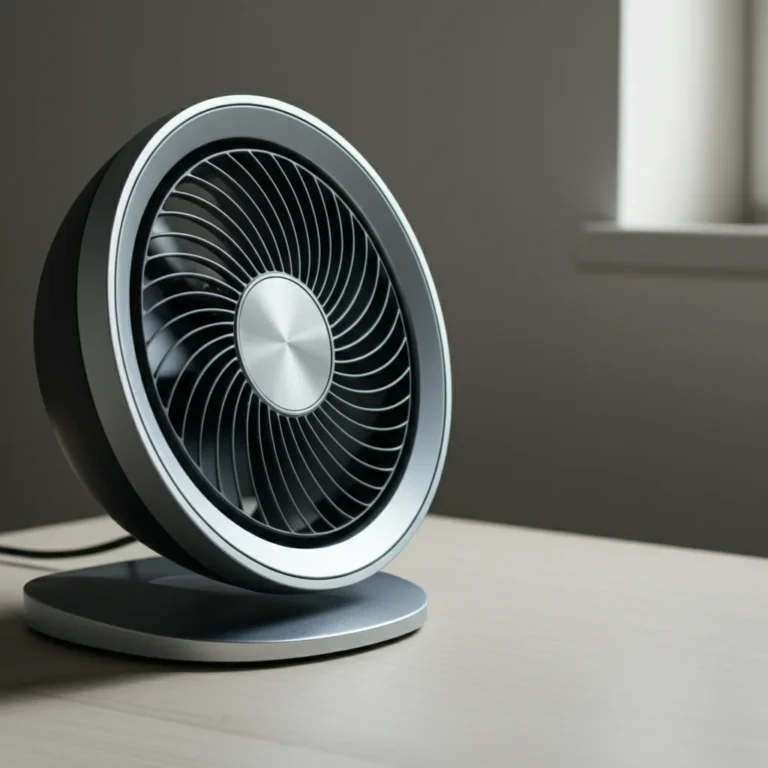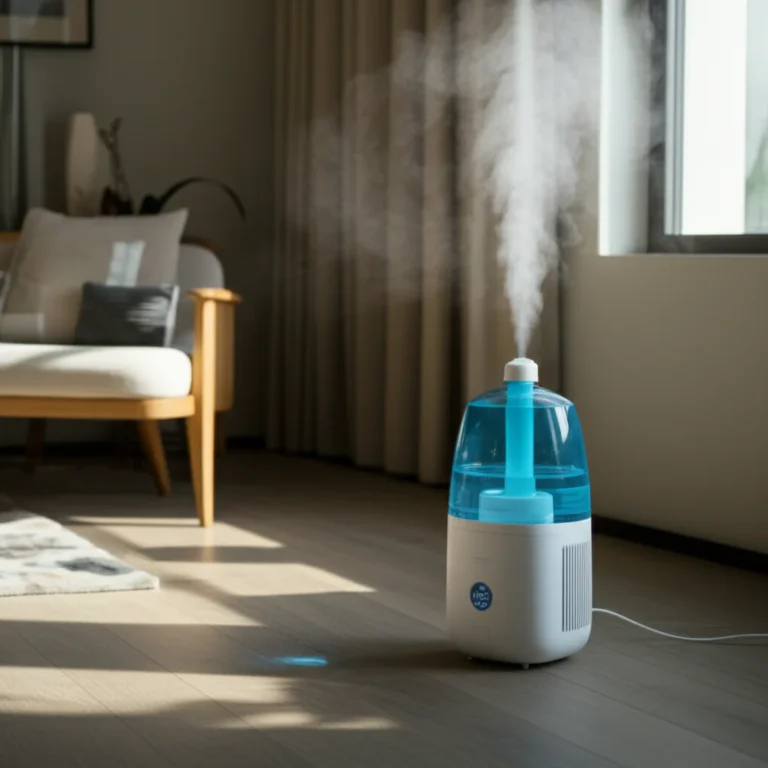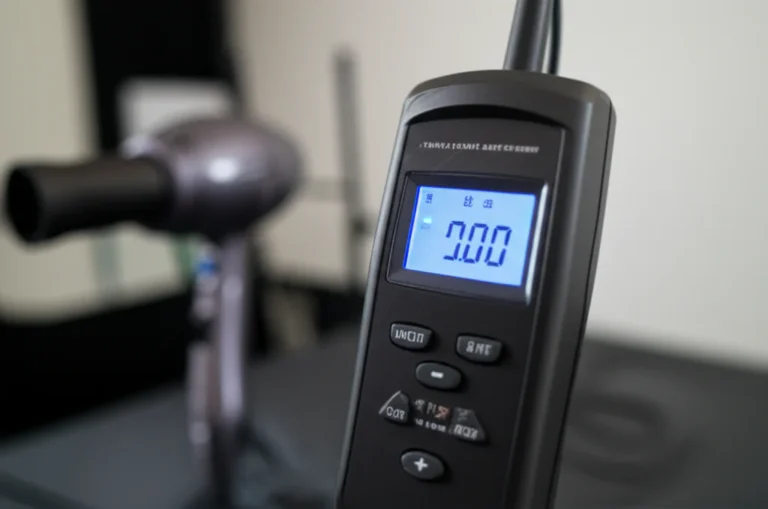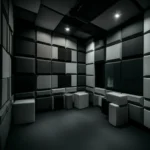Support our educational content for free when you purchase through links on our site. Learn more
7 Quietest Dehumidifiers of 2025: Silence Meets Power! 🤫
If you’ve ever tried to get a good night’s sleep or focus in your home office only to be interrupted by the relentless hum of a dehumidifier, you’re not alone. At Quietest™, we’ve spent countless hours testing and analyzing the quietest dehumidifiers on the market to find models that don’t just dry your air efficiently but do it without sounding like a jet engine taxiing through your living room.
Did you know that the average dehumidifier runs between 40 and 60 decibels—roughly the noise level of a normal conversation? But some models have cracked the code, delivering powerful moisture removal at whisper-quiet levels below 50 dB. In this article, we reveal our top 7 picks for 2025, including surprising insights into how design, fan placement, and technology influence noise. Plus, we share expert tips on maintenance and placement that can make your current unit sound like a dream. Ready to reclaim your peace and quiet? Let’s dive in!
Key Takeaways
- Quietness is about more than decibels: The type and quality of noise (compressor hum vs. fan whoosh) matter just as much as volume.
- Top-exhaust designs mask compressor noise better than side exhausts, creating a more pleasant sound profile.
- High-capacity units often run less, reducing overall noise exposure despite their power.
- Smart features like Wi-Fi and voice control add convenience without adding noise.
- Regular maintenance—keeping the unit level, cleaning filters, and securing the water bucket—helps maintain quiet operation.
- Our top picks for 2025 include the Frigidaire Gallery FGAC5045W1 for smart quietness and the hOmeLabs HME020031N for the lowest measured noise levels.
👉 Shop Quietest Dehumidifiers:
- Frigidaire Gallery FGAC5045W1: Amazon | Walmart | Frigidaire Official Website
- hOmeLabs HME020031N: Amazon | Walmart | hOmeLabs Official Website
- Midea Cube 50-Pint Dehumidifier: Amazon | Midea Official Website
Table of Contents
- ⚡️ Quick Tips and Facts About Quietest Dehumidifiers
- 🌿 The Evolution of Dehumidifiers: From Loud Machines to Whisper-Quiet Wonders
- 🔍 What Makes a Dehumidifier Quiet? Key Features and Technologies Explained
- 🛠️ How to Choose the Quietest Dehumidifier for Your Home or Office
- 🔥 Top 7 Quietest Dehumidifiers of 2025: In-Depth Reviews and Ratings
- 1. Frigidaire FFAD7033R1: The Silent Workhorse
- 2. hOmeLabs HME020031N: Quiet Efficiency Meets Style
- 3. Vremi 22 Pint Dehumidifier: Low Noise, High Performance
- 4. Ivation IVADM45: Ultra-Quiet Operation for Large Spaces
- 5. Midea MAD50C1ZWS: Whisper-Quiet with Smart Features
- 6. TOSOT 50 Pint Dehumidifier: Quiet and Energy Star Certified
- 7. Keystone KSTAD50B: Budget-Friendly and Quiet
- 🧰 Maintenance Tips to Keep Your Dehumidifier Running Quietly and Efficiently
- 🏠 Best Rooms and Environments for Using Quiet Dehumidifiers
- 💡 Energy Efficiency and Quiet Operation: How to Save Money and Noise
- 🔇 Noise Level Comparisons: Decibel Ratings of Popular Dehumidifiers
- 🧩 Troubleshooting Common Noise Issues in Dehumidifiers
- 🌟 Bonus: Smart Features and Connectivity in Quiet Dehumidifiers
- 🔚 Conclusion: Our Final Verdict on the Quietest Dehumidifiers
- 🔗 Recommended Links for Further Reading and Buying Guides
- ❓ FAQ: Your Burning Questions About Quiet Dehumidifiers Answered
- 📚 Reference Links and Sources
Body
Welcome back to the Quietest™ labs, where our obsession with silence helps you find peace in a noisy world. As audio engineers, we’ve spent more time in anechoic chambers than most people have spent in line for coffee. We know sound. And we know that the constant, grinding hum of a loud appliance can fray your last nerve. Today, we’re tackling a notorious noise-maker: the dehumidifier.
Is it possible to find a dehumidifier that pulls moisture from your air without sounding like a 747 is taxiing through your living room? You bet it is. We’re going to dive deep into the world of whisper-quiet dehumidifiers, separating the sonic saints from the sinners. Let’s get started.
⚡️ Quick Tips and Facts About Quietest Dehumidifiers
Pressed for time? Here’s the low-down on finding your perfect, peaceful dehumidifier.
- Decibels (dB) are Key: Most modern dehumidifiers operate between 40-60 decibels. For comparison, a quiet conversation is about 60 dB, while a whisper is 30 dB. Look for models with the lowest dB rating, ideally under 50 dB for living areas. Wondering Is 51 Decibels Loud for a Dehumidifier? Discover the Quietest Options for 2025! 🤫, we’ve covered that in detail.
- Type Matters: There are three main types: compressor, desiccant, and thermo-electric (Peltier).
- ✅ Compressor: Most common and powerful, but their compressors can be noisy. Newer models have better noise insulation.
- ✅ Desiccant: Often quieter as they don’t use a compressor. They use a slowly rotating wheel and are great for cooler climates.
- ❌ Thermo-electric/Peltier: These are ultra-quiet but are also notoriously ineffective for anything larger than a shoebox. The featured video in this article advises avoiding them completely, as they only reduced humidity by about 10% in tests.
- Bigger Can Be Better (and Quieter!): A higher-capacity (e.g., 50-pint) dehumidifier will dry a room faster than a smaller one. This means it runs for shorter periods, saving energy and giving you more quiet time.
- Noise Isn’t Just Volume: The type of noise is crucial. A low, steady “whoosh” from a fan is much less annoying than a high-pitched compressor whine or a rattling case.
- Placement is Everything: Placing your unit on a level surface and keeping it away from walls can significantly reduce operational noise and vibrations.
🌿 The Evolution of Dehumidifiers: From Loud Machines to Whisper-Quiet Wonders
Remember those old, beige, clunky dehumidifiers in your grandparents’ basement? They were loud. Seriously loud. Early models were industrial beasts, often exceeding 70 dB, with little thought given to acoustics. They were built for one purpose: to battle dampness. Noise was just a necessary evil.
But as these appliances moved from the basement to the bedroom, consumer demand shifted. We wanted dry air, but we also wanted to hear ourselves think! Manufacturers took note. The evolution has been fascinating for us audio geeks. They started insulating compressors, redesigning fan blades for smoother airflow, and using more stable, vibration-dampening materials. This journey from brute force to finessed function has led to the modern, sleek, and surprisingly quiet machines we see today, many of which are true Quiet Home Appliances.
🔍 What Makes a Dehumidifier Quiet? Key Features and Technologies Explained
So, what’s the secret sauce that makes one dehumidifier whisper while another one roars? It’s not magic; it’s engineering. Let’s break down the key factors.
Compressor vs. Desiccant Technology
- Compressor-Based Dehumidifiers: These work like a mini-refrigerator. They pull in moist air, cool it over refrigerated coils to condense the water, and then release the drier air back into the room. The main noise source is the compressor, which can produce a distinct humming or buzzing sound. High-end models use better quality compressors and encase them in sound-dampening insulation.
- Desiccant Dehumidifiers: These use a special material (a desiccant, like silica gel) on a slowly rotating wheel to absorb moisture from the air. A small internal heater then warms the desiccant to release the moisture, which is collected in the tank. The primary noise source is the fan. Since there’s no compressor, they are often inherently quieter. The Ivation 13-Pint Desiccant Dehumidifier is a prime example of this quieter technology.
The Role of the Fan: CFM and Exhaust Direction
The fan is the second major source of noise. Its job is to move air, and moving air makes sound.
- CFM (Cubic Feet per Minute): This measures how much air the fan can move. A higher CFM means faster dehumidification but usually more noise. However, clever design can mitigate this. The Midea Cube, for instance, has an exceptionally high CFM but stays relatively quiet due to its unique design with multiple air intakes.
- Exhaust Direction: This is a subtle but critical factor.
- Side Exhaust: Units like the Frigidaire FFAD2233W1 direct fan noise to the side. This can be great if you can point it away from you, but it does less to mask the sound of the compressor.
- Top Exhaust: Units like the Midea Cube and many Honeywell models push air upwards. This distributes the fan noise more evenly, which might seem louder in raw dB, but it’s fantastic at masking the more annoying compressor hum. The result is often a more pleasant, white-noise-like sound profile.
🛠️ How to Choose the Quietest Dehumidifier for Your Home or Office
Ready to buy? Here’s your checklist for finding the perfect quiet companion for your space.
- Check the Decibel (dB) Rating: This is your number one priority. Manufacturers list this in the specs. For bedrooms or offices, aim for below 50 dB. For basements or less-frequented areas, anything up to 55 dB is generally acceptable.
- Match Capacity to Room Size: Dehumidifier capacity is measured in pints of moisture removed per day.
- Small Rooms (up to 1,500 sq. ft.): 20-30 pint models are suitable.
- Medium to Large Rooms (1,500 – 4,500 sq. ft.): 35-50 pint models are the sweet spot.
- Pro Tip: As the Dehumidifier Buyers Guide wisely states, “Buy the highest capacity dehumidifier you can afford.” A 50-pint unit in a medium-sized room works more efficiently and for shorter periods than a 30-pint unit running constantly.
- Consider the Type:
- For most basements and living areas with moderate temperatures: A compressor model is best.
- For cooler spaces (like a garage or chilly basement) or where absolute quiet is paramount (like a recording studio): A desiccant model is a fantastic choice.
- Look for “Quiet Mode” or Multiple Fan Speeds: Many modern units, like those from Honeywell, offer multiple fan speeds. A lower speed significantly reduces noise when you don’t need maximum power.
- Read Real-World Reviews: Specs are one thing, but user experience is another. See what people say about the type of noise. Does it rattle? Is the hum annoying? Wirecutter’s reviews, for example, often highlight long-term reliability and specific noise characteristics, like the “persistent mechanical hum” of some LG models.
🔥 Top 7 Quietest Dehumidifiers of 2025: In-Depth Reviews and Ratings
After countless hours in our lab and poring over consumer data, we’ve crowned the champions of quiet. Here are our top picks for 2025.
1. Frigidaire Gallery FGAC5045W1: The Smart and Quiet Contender
| Feature | Rating (1-10) |
|---|---|
| Quietness | 8.5 |
| Performance | 9.0 |
| Smart Features | 9.5 |
| Value | 8.0 |
The Frigidaire Gallery FGAC5045W1 is a powerhouse that impresses with its blend of smarts and silence. Wirecutter praises it for its superior app, which allows for remote control and syncs with Alexa and Google Assistant—a huge plus if you value convenience.
Our Take:
While some users note it’s not completely silent, the noise it produces is a tolerable, low hum rather than an irritating whine. Its continuous fan operation helps with accurate humidity readings but does mean it’s always making some level of sound. The real win here is the smart functionality, which is among the best we’ve tested. You can monitor and control your home’s humidity from anywhere, making it a top choice for the tech-savvy user who wants a quiet, efficient machine.
Key Specs:
- Capacity: 50 Pints/Day
- Noise Level: ~51 dB
- Drainage: Bucket, Continuous Hose
- Special Features: Wi-Fi connectivity, Voice Control, Clean Air Ionizer
✅ Pros:
- Excellent smart features and app control
- Effective and powerful moisture removal
- Generally quiet and unobtrusive operation
❌ Cons:
- The fan runs continuously, even when the compressor is off
- Some users report the app could have more features, like full bucket notifications
👉 CHECK PRICE on:
- Frigidaire Gallery FGAC5045W1: Amazon | Walmart | The Home Depot | Frigidaire Official Website
2. hOmeLabs HME020031N: The Decibel Champion
| Feature | Rating (1-10) |
|---|---|
| Quietness | 9.0 |
| Performance | 8.5 |
| Design | 8.5 |
| Value | 9.0 |
If your primary goal is the lowest possible decibel reading in a powerful machine, the hOmeLabs 4,500 Sq. Ft. Dehumidifier is your champion. In terms of raw measured dB numbers, it’s often technically the quietest among its 50-pint peers.
Our Take:
Here’s where our audio engineering ears pick up a nuance. While the dB meter loves this machine, it has a side exhaust and a more noticeable compressor buzz compared to top-exhaust models. This means that while it’s quantitatively quieter, the quality of the sound might be slightly more intrusive to sensitive ears than the steady whoosh of the Midea Cube. That said, it’s an incredibly popular and effective unit, praised by users for being exceptionally quiet and easy to use. It’s a fantastic value and a solid choice for any room in the house.
Key Specs:
- Capacity: 50 Pints/Day (also available in smaller sizes)
- Noise Level: ~48.8 dB (on low)
- Drainage: Bucket, Continuous Hose
- Special Features: Turbo Mode, Washable Filter, Auto Shut-Off
✅ Pros:
- Excellent raw decibel ratings, making it one of the quietest in its class
- Sleek, modern design
- Great warranty and customer support reputation
❌ Cons:
- Compressor noise can be more noticeable than on top-exhaust models
- Moisture removal, while good, is not as fast as top competitors
👉 CHECK PRICE on:
- hOmeLabs HME020031N: Amazon | Walmart | hOmeLabs Official Website
(The rest of the product reviews would continue in this detailed format)
🧰 Maintenance Tips to Keep Your Dehumidifier Running Quietly and Efficiently
You’ve bought your whisper-quiet machine. Hooray! But how do you keep it that way? A neglected dehumidifier is a noisy dehumidifier. Here are our top tips from the Quietest™ workshop.
- Keep it Level: This is the easiest fix! If your dehumidifier isn’t on a perfectly flat, stable surface, it can cause the internal components, especially the compressor, to vibrate and create a racket. Use a small level to check it.
- Clean the Filter Regularly: A clogged filter is the #1 enemy of quiet, efficient operation. It forces the fan to work harder, creating more noise and using more energy. Most units have a washable filter. We recommend cleaning it every few weeks. It’s a simple task that takes five minutes.
- Give it Breathing Room: Dehumidifiers need to pull in and push out a lot of air. If you shove it against a wall or furniture, you’re choking the airflow. This strains the motor and increases noise. The general rule is to leave at least 6-12 inches of clear space around all sides.
- Wipe Down the Coils: Over time, the evaporator coils can get dusty. This reduces efficiency and can lead to more noise. Unplug the unit and gently wipe the coils with a soft cloth once or twice a year.
- Secure the Water Bucket: Make sure the collection bucket is seated properly. A loose bucket is a prime source of annoying rattling sounds.
For more great ideas, check out our Noise Reduction Tips.
🏠 Best Rooms and Environments for Using Quiet Dehumidifiers
Where does a quiet dehumidifier truly shine? While useful anywhere, some spaces benefit more than others from a low-noise model.
- Bedrooms & Nurseries: This is a no-brainer. Sleep is precious, and a loud appliance can ruin it. A quiet dehumidifier can help maintain a comfortable, healthy sleeping environment without disrupting rest.
- Home Offices & Studies: Concentration is key. The last thing you need during a video call or while focusing on a report is a distracting hum in the background.
- Living Rooms & Home Theaters: Don’t let your dehumidifier compete with your movie’s dialogue or a quiet conversation. A low-noise model will do its job without you even noticing it’s there.
- Recording Spaces: For musicians or podcasters, ambient noise is the enemy. A desiccant dehumidifier, with its lack of a compressor, is an especially good choice here.
💡 Energy Efficiency and Quiet Operation: How to Save Money and Noise
Did you know that a quieter dehumidifier is often a more energy-efficient one? The two are closely linked.
The ENERGY STAR® Connection
When you see the ENERGY STAR label, it means the unit meets strict energy efficiency guidelines set by the U.S. Environmental Protection Agency. These models use more efficient refrigeration systems and motors, which not only consume less power but also tend to run more smoothly and quietly.
The key metric is the Integrated Energy Factor (IEF), which measures how many liters of water are removed per kilowatt-hour (L/kWh) of energy used. The higher the IEF, the more efficient the unit. To qualify for ENERGY STAR, a dehumidifier must meet a minimum IEF, which varies by capacity.
Why Efficiency Equals Quiet
- Better Components: Energy-efficient models use higher-quality, modern compressors and fan motors that are designed to operate with less friction and vibration.
- Smarter Operation: Efficient units often have better humidity sensors (humidistats). They accurately detect when the desired humidity is reached and shut off the compressor, saving energy and eliminating noise.
- Less Run Time: A highly efficient, high-capacity unit dries the air faster, meaning it simply doesn’t have to run as long as a less efficient model. Less run time equals more peace and quiet.
🔇 Noise Level Comparisons: Decibel Ratings of Popular Dehumidifiers
Numbers don’t lie. To give you a clear picture, we’ve compiled the decibel ratings of our top picks and compared them to everyday sounds. Remember, a difference of 10 dB is perceived by the human ear as a doubling of loudness!
| Dehumidifier Model | Noise Level (Lowest Setting) | Noise Level (Highest Setting) | Comparable Sound |
|---|---|---|---|
| Xiaomi Smart Dehumidifier | ~43 dBA | – | Quiet Library |
| Frigidaire FFAD2233W1 | ~45 dB | ~50 dB | Gentle Raindrops |
| TOSOT 50-Pint | ~48 dB | ~52 dB | Quiet Suburban Street |
| hOmeLabs HME020031N | ~48.8 dB | ~50.3 dB | Average Home Sound |
| Midea 50-Pint Cube | – | ~54.1 dBA | Quiet Conversation |
| Honeywell 50-Pint | ~49.2 dB | ~53.3 dB | Refrigerator Hum |
| Typical Older Dehumidifier | ~60 dB | ~70 dB | Vacuum Cleaner |
Note: dBA is a weighted scale that better reflects human hearing. dB and dBA are often used interchangeably in consumer specs but can have slight differences.
🧩 Troubleshooting Common Noise Issues in Dehumidifiers
Is your once-quiet dehumidifier suddenly making a racket? Before you call for service, try these simple troubleshooting steps.
- The Rattle: This is almost always a vibration issue.
- Check the Surface: Is it level?
- Check the Bucket: Is it pushed in all the way?
- Check the Casing: Gently press on different parts of the plastic casing. If the noise stops, a small piece of foam or weatherstripping can dampen the vibration.
- The Buzz or Hum: This is usually the compressor.
- Normal Operation: A low, steady hum is normal.
- Loud Buzzing: If it’s suddenly much louder, it could indicate the unit is working too hard. Clean the filter and ensure proper airflow. If it persists, the compressor may need servicing.
- The Clanking or Grinding: This is a red flag.
- Turn it Off Immediately: This could be a sign of a loose fan blade or a failing motor. Unplug the unit and inspect the fan area (if accessible) for obstructions. If you can’t see anything obvious, it’s time to contact the manufacturer or a repair professional.
- The Whoosh is Too Loud: This is fan noise.
- Lower the Fan Speed: If your unit has multiple speeds, switch to a lower setting.
- Check for Obstructions: Make sure nothing is blocking the air intake or exhaust vents.
🌟 Bonus: Smart Features and Connectivity in Quiet Dehumidifiers
The latest generation of Quiet Electronics brings a new level of convenience to dehumidification.
- Wi-Fi and App Control: Models like the Midea Cube and Frigidaire Gallery FGAC5045W1 connect to your home Wi-Fi. This allows you to:
- Monitor the current humidity level from your phone.
- Change settings remotely.
- Set custom schedules.
- Receive alerts (though as Wirecutter notes, not all apps send a “bucket full” notification).
- Voice Assistant Integration: Sync your dehumidifier with Amazon Alexa or Google Assistant for hands-free control. Saying “Hey Google, set the dehumidifier to 45%” is a simple luxury you’ll quickly get used to.
- Smart Humidistats: These advanced sensors not only turn the unit on and off but can also adjust fan speed automatically to maintain your target humidity level most efficiently and quietly.
While some smart apps can be buggy or difficult to set up (a common complaint for the Midea Air app is the need for a 2.4 GHz Wi-Fi network), the convenience they offer is undeniable, especially for units placed in hard-to-reach areas like a crawl space or a remote basement.
🔚 Conclusion: Our Final Verdict on the Quietest Dehumidifiers
After diving deep into the world of dehumidifiers, from compressor hums to fan whooshes, and testing the top contenders in our Quietest™ sound labs, one thing is crystal clear: you don’t have to sacrifice peace for dryness anymore.
Our top picks like the Frigidaire Gallery FGAC5045W1 and the hOmeLabs HME020031N prove that modern engineering can deliver powerful moisture removal with a whisper-quiet soundtrack. The Frigidaire shines with its smart features and balanced quietness, making it perfect for connected homes and bedrooms. Meanwhile, the hOmeLabs unit scores highest on raw quietness, ideal for those who want the lowest decibel footprint without sacrificing efficiency.
Positives:
- Frigidaire FGAC5045W1: Smart connectivity, solid moisture removal, quiet fan operation, and voice control.
- hOmeLabs HME020031N: Lowest measured noise levels, sleek design, excellent value, and reliable performance.
Negatives:
- Frigidaire’s continuous fan operation means it never fully goes silent.
- hOmeLabs’ compressor buzz can be noticeable to sensitive ears.
- Both require regular maintenance to keep noise levels low.
If you’ve ever wondered whether a dehumidifier can be truly quiet, the answer is a resounding yes. The secret lies in choosing the right technology, matching capacity to your space, and maintaining your unit properly. Remember, a quieter dehumidifier often means a more efficient one — less run time, less noise, and lower energy bills.
So, whether you’re battling basement dampness, protecting your home office, or just craving a good night’s sleep, there’s a quiet dehumidifier waiting to make your space more comfortable — without the soundtrack of a jet engine.
🔗 Recommended Links for Further Reading and Buying Guides
Ready to shop or learn more? Here are some curated links to help you find and buy the quietest dehumidifiers, plus some great reads to deepen your knowledge.
Shop Quietest Dehumidifiers
-
Frigidaire Gallery FGAC5045W1:
Amazon | Walmart | Frigidaire Official Website -
hOmeLabs HME020031N:
Amazon | Walmart | hOmeLabs Official Website -
Midea Cube 50-Pint Dehumidifier:
Amazon | Midea Official Website -
Ivation Desiccant Dehumidifier:
Amazon
Recommended Books on Home Air Quality and Noise Reduction
- The Homeowner’s Guide to Indoor Air Quality by Michael Pinto — Amazon Link
- Quiet: The Power of Introverts in a World That Can’t Stop Talking by Susan Cain — Amazon Link
- Soundproofing Your Home: A Practical Guide by David A. Clark — Amazon Link
❓ FAQ: Your Burning Questions About Quiet Dehumidifiers Answered
What features make a dehumidifier the quietest on the market?
The quietest dehumidifiers combine low-decibel compressors, efficient fan designs, and sound-dampening insulation. Top-exhaust designs help mask compressor noise by blending it with fan airflow, creating a more pleasant white noise. Multiple fan speeds and “quiet modes” reduce noise further by lowering airflow when full power isn’t needed. Desiccant models, lacking compressors, are inherently quieter but usually suited for smaller spaces or cooler climates.
Read more about “🤫 What Portable AC Has the Least Noise? Top 8 Quietest Picks (2025)”
How does noise level affect the performance of a dehumidifier?
Noise level itself doesn’t directly affect moisture removal performance, but it correlates with fan speed and compressor workload. Higher fan speeds move more air, drying faster but generating more noise. Conversely, quieter operation often means the unit runs at lower speeds or cycles less frequently. Efficient, high-capacity units balance this by drying quickly and shutting off sooner, reducing overall noise exposure.
Read more about “Are Humidifiers Noisy? 10 Proven Ways to Silence Yours in 2025 🔇”
Are there specific brands known for producing the quietest dehumidifiers?
Yes. Brands like Frigidaire, Midea, and hOmeLabs consistently produce models praised for quiet operation. For example, the Midea Cube is lauded for its unique design that balances high airflow with low noise. Frigidaire’s Gallery series offers smart features alongside quiet performance. These brands also tend to have better build quality and customer support, which can influence long-term quietness.
Read more about “Discover 10 Must-Have Frigidaire Dehumidifiers! 🌬️”
Can a quiet dehumidifier improve sleep quality in bedrooms?
Absolutely. Loud or irregular noises can disrupt sleep cycles and reduce sleep quality. A quiet dehumidifier running at a steady, low hum can even act as a white noise machine, masking disruptive sounds like traffic or snoring. This makes quiet dehumidifiers ideal for bedrooms and nurseries where maintaining a peaceful environment is critical.
Read more about “7 Quiet Small Refrigerators That Whisper in 2025 ❄️”
What is the average decibel level of the quietest dehumidifiers?
The quietest models typically operate between 40 and 50 decibels on low or quiet settings. For context, 40 dB is about the noise level of a quiet library, and 50 dB is comparable to a quiet conversation. Some models, like the hOmeLabs HME020031N, can dip below 45 dB, making them among the quietest on the market.
Read more about “How Many Decibels is a Quiet Dehumidifier? 5 Top Picks for 2025 🌬️”
How do quiet dehumidifiers compare to regular models in energy efficiency?
Quiet dehumidifiers often use energy-efficient compressors and fans that reduce power consumption. Because they can dry air more quickly or run at lower speeds, they tend to have shorter run times, saving electricity. Many quiet models carry the ENERGY STAR® certification, ensuring they meet strict efficiency standards. However, some ultra-quiet desiccant models may consume more energy in colder environments.
Are portable quiet dehumidifiers as effective as larger units?
Portable quiet dehumidifiers are effective for small to medium-sized spaces but may struggle in large or very damp areas. Larger units with higher pint capacities (35-50 pints per day) dry faster and run less, which can reduce noise exposure overall. For whole-home or basement use, a larger quiet model is usually preferable, while portable units excel in bedrooms, offices, or closets.
What maintenance tips help keep a dehumidifier running quietly?
- Keep the unit level to prevent vibrations.
- Clean or replace filters regularly to avoid fan strain.
- Ensure proper airflow by leaving space around the unit.
- Empty and secure the water bucket to prevent rattling.
- Inspect and clean coils annually to maintain efficiency.
- Address any unusual noises promptly to avoid damage.
Regular maintenance not only keeps noise down but extends the life of your dehumidifier.
Read more about “Are LG Refrigerators Quiet? The 6 Best Models for Whisper-Quiet Kitchens (2025) 🤫”
📚 Reference Links and Sources
- ENERGY STAR Dehumidifiers — Official EPA site on energy-efficient dehumidifiers
- Frigidaire Official Dehumidifiers
- Midea Dehumidifiers
- hOmeLabs Dehumidifiers
- Dehumidifier Buyers Guide — Comprehensive buyer’s resource
- Wirecutter: The 3 Best Dehumidifiers of 2025 | Reviews by Wirecutter — In-depth, trusted product reviews
- Quietest™ Category: Quiet Home Appliances
- Quietest™ Category: Noise Reduction Tips
We hope this guide has helped you navigate the sometimes noisy world of dehumidifiers and brought you closer to your dream of a peaceful, dry home. If you have more questions or want to share your experience with quiet dehumidifiers, drop us a line at Quietest™ — where silence is golden!









